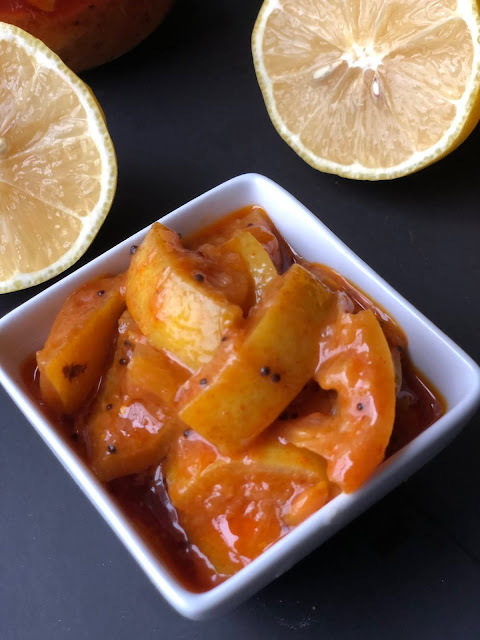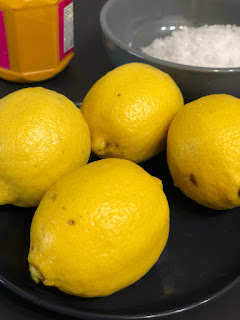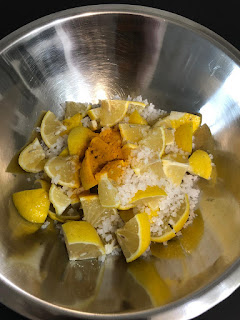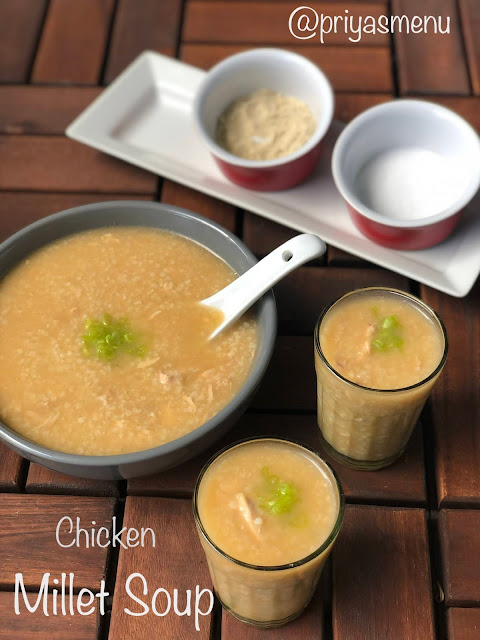Tamarind glazed Roasted Chicken
What is Sustainability?
Sustainability is the potential to maintain the product by using natural resources wisely for all human beings for now and future. In general, it is to reduce the wastage of products and save the environment. For example, if the product is sustainable, it can be recycled, or reused in some way because it has not consumed all the natural resources to produce the product.
Sustainability in the Food industry:
Sustainable food is producing food using processes and systems that conserve non-renewable energy and natural resources. It should be economically efficient and safe for workers, communities, and consumers, without compromising the needs of future generations. Sustainable food is always safe and healthy to consume since it is produced without any hazardous pesticides, chemicals, and antibiotics.
Production, manufacturing or processing, distribution, consumption, and disposal are the five main parts of the food system. Sustainability in the food industry does not refer only to the food system, it also refers to the people involved in each system. The responsibility of the food industry is not only delivering quality food, but it is also directly related to the efficient use of water and energy, materials used for furnishings, appliances, etc.
Being sustainable is making a responsible decision to understand and minimize the effect of environmental impact. Being mindful in sourcing the ingredients, choosing fair trade products, using natural resources to reduce wastage, etc. It also involves good employment practices, community support, and protecting health.
My Future Restaurant:
Regarding my future restaurant "Tangy Twist", I would like to focus on a single ingredient "Tamarind" and deliver a delicious menu by being sustainable in all aspects to achieve profitability in business.
I will try to utilize the key ingredient entirely to deliver tasty and delicious recipes like "Tender Tamarind Chutney" "Iced Tamarind juice using green tea", "Tender Tamarind leaves Rice", "Bellpepper - Tamarind leaves Chutney", "Pumpkin and Tamarind chutney", "Tangy Fish balls curry", "Tamarind chicken", "Tamarind Jam" etc.
The reason for choosing Tamarind to design my restaurant is because it is a sustainable product. The tamarind is used for food, medicinal, cultural, social, environmental improvement and also, for income generation purposes. All parts of the tree can be used effectively. Fresh and dried fruit can be used in many dishes like stews, soups, condiments, etc. The pulp can be used as a meat tenderizer. After using the pulp, the leftovers can be used in polishing brass and copper, the branches and trunks can be used to make furniture, etc.
A sustainable restaurant is one that makes a meaningful effort to reduce the impact on the environment. So considering this in my mind, I have designed a sustainability checklist that focuses on food wastage, serving and packaging materials, procuring food materials from sustainable sources, energy consumption, etc.
Few standards which will be followed in my restaurant:
- Will use banana leaves for serving and packaging foods.
- Will try to utilize every part of the tamarind tree.
- Will offer organic waste to local farmers.
- Will use recycled materials.
Mission Statement:
Our mission is to serve high quality, fresh and nutritious meals that have been sourced responsibly. We believe it is our responsibility to deliver food from a clean and eco-friendly kitchen. Along with the health and safety of our employees, we empower them to learn and innovate. Our goal is to maintain and deliver an environmentally sustainable food preparation system, right from sourcing to disposal.
Sustainability Checklist:
What is a sustainability checklist?
A sustainability checklist is a non-regulatory tool and it is created to evaluate that all the goals mentioned in the mission are involved in the food production, which includes sourcing, farmers, and suppliers. And also, it gives information about how food waste is managed, how the environment is protected, how the people and communities are involved, etc.
Image credit - Fao.org
The checklist below represents and covers all 4 pillars of Sustainability. The 4 Ps are Planet, People, Policy, and Profit. The planet is defied in terms of protecting the environment, ie our land, water, and other natural resources. The people sustainability focus on the importance of anyone who involved in making the products. The policy is a way for a business to document the way the company will handle sustainability issues in the organization. The sustainability profit means that the business provides a service of product that is both profitable and environmentally friendly.
1. Going local - sourcing local and sustainable produce.
Justification: Sourcing local food products will support the local economy. Buying directly from the farmers and communities helps to save money on transportation. This will encourage customers to know about their community farm and also, helps to understand the importance of local farming. Deal breaker!
2. Purchasing organic meat, poultry, and dairy products from the local farmers and butcheries.
Justification: Organic food means free from pesticides and synthetic fertilizers. Buying organic will have less impact on the environment. It helps in conserving soil and natural water resources. Organic produce is more nutritious because the organic livestock that is raised for meat, eggs, and dairy products are raised in a good living condition and fed only organic feed. Organic food is more appetizing, it helps in maintaining a sustainable atmosphere, and also, it increases the profitability of the business.
3. Using fresh ingredients, preparing from scratch, and avoiding store-bought processed food items.
Justification: Processed food is changing the natural form of food for convenience and safety. Avoiding processed food is challenging but it is a must to maintain a sustainable restaurant. The store-bought processed food items include additives or chemicals to increase their shelf life and it is harmful to the people. Using fresh ingredients and preparing from the scratch helps in maintaining a healthy business. For example, in my restaurant with tamarind as the key ingredient, preparing tamarind paste, pulp, and powder from the scratch using fresh tamarind is always best rather than buying readymade processed paste. This also attracts customers because of the taste and increases the profitability of the business in a sustainable way.
4. Buying seasonal produce.
Justification: When fruits and vegetables are bought during the off-season, it lacks in flavor and texture because the products are picked before riping as they take time for shipment. When products are in a season that means there is an abundance available and also, you can find it much cheaper. For example, the Tamarind harvest lasts from November until February and the product will be cheap during the season. Deal breaker!
5. Growing our own produce.
Justification: Growing our own produce like herbs and vegetable help in minimizing the purchasing cost, transportation cost, and storage expenses. Usually, herbs have a tendency to lose their texture fast when it is not maintained properly which results in food waste. So, growing our own produce saves our money and also, helps in delivering fresh food.
6. Practising canning, pickling, and fermenting techniques to reduce food waste.
Justification: These heritage techniques extend the life of seasonal and local goods. Though utilizing fresh ingredients is best, these techniques help in food wastage. Around 81% of the fruit is wasted because it is not used at the time but most of the fruits can be frozen and used for desserts and smoothies. This not only helps in food wastage but also saves money.
7. Maintaining the proper disposal of used oil.
Justification: The used cooking oil should never be disposed of down the drain. It can clog pipes and make it costly to fix. Also, the business owners get fined if the disposal of grease is not done properly. To avoid this issue, used oils should be collected in a bin or tank and given to a reputable service provider who collects on a regular basis. The processed used cooking oil can also be used as a nutritional supplement for animal feed and in the production of numerous household and commercial products. For more information, check Rothsay company who deals with the processed used oils.
8. Focussing on menu selections.
Justification: Instead of focussing on a large menu, shrinking the menu list will help in maintaining sustainable standards. This provides a chef to contribute more effort and make each dish as sustainable as possible.
9. Using every part of vegetables and meats instead of throwing away.
Justification: Using the whole vegetable from stem to leaf or the whole chicken from beak to tail will help in reducing food waste. And also, it means maximizing the profit of the business. For example, vegetable peels, a root of herbs like mint and cilantro, etc. can be effectively used in making stocks or chutney.
10. Providing organic waste to the local farmers.
Justification: Disposing of organic waste effectively is one of the great ways to reduce food loss. Instead of throwing them in the garbage, organic waste can be collected in a bin and given to local farmers which can be used as manure for their field. Use "Local Harvest's Website" to find farmer's markets and farms near you.
11. Proper maintenance of food storage areas.
Justification: Food storage is an essential part of food safety and it is the responsibility of management to ensure that the food storage areas are cleaned and maintained properly. Regular cleaning will help in saving the cost of pest control management.
12. Serving a small portion sized meals.
Justification: Serving a larger portion of the meal is a trend now and it is one of the major reasons for food wastage. Minimizing the serving portion or reducing the size of the plate and reducing the price will help in managing food waste.
13. Weekly purchase or shop when required.
Justification: Doing weekly shopping or when required will help in minimizing the food items getting spoiled.
14. Serving fresh, healthy, and nutritious food.
Justification: Cooking and delivering fresh and nutritious food is not only healthy, but it also attracts customers. Re-heating the food should be avoided. Nowadays, the concept of healthy food choices is massively increasing among people, and serving fresh will benefit the business and increase profitability in a sustainable way.
15. Run the dishwasher only when the load is full.
Justification: Using the dishwasher only when required saves energy and water resources which eventually helps the business to grow healthy.
16. Use energy effectively.
Justification: A better way of using energy can increase profit and reduce business overheads. Turning off heaters or light when not in use, providing better air circulation through carefully planned windows, using digitally controlled air conditioners, etc helps in saving energy.
17. Avoid using cling or plastic wrap.
Justification: Cling wrap can keep the food fresh but it pollutes the planet. By reducing such wraps, we can control the wastage production and also, can reduce the negative impact on the environment.
18. No take out plastic boxes. Using bio-degradable products or encouraging customers to bring reusable boxes.
Justification: To maintain sustainability, no plastic take out boxes are allowed. Plastics are the biggest enemy of the environment. Replacing it with a banana leaf is a great option and also, encouraging customers to bring reusable boxed by giving discounts helps in reducing the environmental impact. In simple, making a simple transition from plastic to bio-degradable packaging will help to run a business in a sustainable way. Deal breaker!
19. Donating extra feeds to charity.
Justification: We can control food waste by donating the excess or extra feed to charity. This will also help in reducing the waste sent to landfills and saves the environment.
20: Taking menu orders through mobile apps to reduce the usage of paper.
Justification: The life cycle of paper starts by destroying the trees and ends by being burned which emits carbon dioxide into the atmosphere. Using mobile apps instead of paper menu card helps in reducing paper wastage. This also saves the environment and also reduce the cost spend on customizing the menu card every time.
21. Managing better waste management.
Justification: This is one of the most important practices to be maintained in order to maintain sustainability in the food business. Practicing better waste management reduces the production of garbage. And also, it helps in maintaining efficient inventory management. To control waste management, we can also ask suppliers to deliver the products without packaging.
22. Purchasing fish products from sustainable sources.
Justification: Asking the following questions to suppliers or local retailers or fishmongers will help in buying fish products in a sustainable way: where the fish was caught, how it was caught, and how the fish was handled after getting caught?. Sustainable fish is attached with methods that don't suppose negative impacts on the population or other species. Purchase fish only in season. By supporting sustainable fisheries, we can keep our fish supply healthy, and also, respect the environment and species by avoiding overfishing, harmful catching methods, etc. This method helps to save our oceans and lakes. The "Called community-supported fisheries" (CSFs) program allows us to understand the source of fish and help local fishing economics. Check "local catch.org" to find community-supported fisheries nearby. Deal breaker!
23. Purchasing fair-trade products.
Justification: Purchasing products that are fair trade certified can reduce poverty and encourage environmentally-friendly production methods. Fairtrade products are free from genetically modified ingredients. The workers on fair trade farms are treated well mannered, enjoy the freedom of association, work in a safe condition and importantly, are paid properly. Forced child and slave labor are strictly prohibited in fairtrade farms. Deal breaker!
24. No water bottles or aerated drinks.
Justification: The bottled water industry is growing in recent days but plastic water bottles are bad for the environment. Extracting water for bottled drinks dries up the natural resources. According to the New York Times, importing water generates 4,000 tons of carbon dioxide which is equivalent to the annual emissions of 700 cars.
25. Using re-usable glass jars to store ingredients in the pantry.
Justification: Storing ingredients in a re-usable glass jar helps in reducing the usage of plastic containers. Buying re-usable jars are a one-time investment and also, does not harm the environment.
26. Organising the refrigerator properly and follow the FIFO method.
Justification: Properly organizing and maintaining the refrigerator helps in food wastage and food spoilage. By following the "First in and first out" method, we can use the food efficiently. The food items are labeled with the dates and stored in a way that older food items are kept in front so that we can use them first.
27. Providing three sink method for cleaning and washing.
Justification: The three sink method not only helps in cleaning and sanitizing the vessels, but it also saves water. The water can be filled with a soap solution in one sink and can be used effectively.
28. Educate the staff about sustainable cooking, environmental impacts, and proper usage of natural resources.
Justification: This is one of the most important checklists to improve the standard of business. The employees should understand the mission properly to run a profitable and sustainable business. Deal breaker!
29. Using energy star rated appliances and flow reducing taps.
Justification: To reduce the usage of energy, opting for more energy-efficient appliances is the best option. Using flow reducing taps is also another great solution to control water and energy.
30. Cleaning the floors and carpet using hot water instead of using harsh chemicals.
Justification: Green cleaning is the best way to reduce the usage of chemicals. The harsh chemicals contain harmful substances that can cause skin allergies to employees and also, the chemical waste can pollute the environment by causing harm to plants and animals.
31. Always clean and neat washrooms with eco-friendly tissues.
Justification: Toilet paper is one of the most dangerous product which spoils the environment. It clogs the drainage which results in spending more money. Using eco-friendly tissues made with recycled materials and Green seal certified is an environmentally friendly alternative. Such type of tissues is manufactured using water and energy-efficient process without using chlorine, which is harmful to the environment. Check the "Sustainable supply" website for more eco-friendly tissues. Using air hand dryers and refillable reusable soap containers with a natural hand soap will also help.
32. Using safe and eco-friendly chemicals for washing and cleaning.
Justification: Eco-friendly cleaning products are made using sustainable manufacturing practices, naturally derived, safe, non-toxic, and biodegradable ingredients that produce no harm to the environment.
33. Health and safety measures for employees.
Justification: Health and safety of employees are very important. Providing a safe environment for employees improves the productivity and quality of work which eventually increases the profit of the business in a sustainable way.
34. Providing weekly one-day free food for the homeless.
Justification: It is our responsibility to contribute something to the community. By providing weekly one-day free food for the homeless helps homeless people getting a nutritious meal. And also, we can donate to local food banks. Many local food banks will pick up food donations free of charge which also saves the warehouse storage and disposal costs.
35. Using furniture made with rapidly renewable wood like bamboo or FSC certified wood.
Justification: Eco-friendly furniture is good for health and importantly, it is created in a way that has minimum negative impacts on the environment. Sustainable furniture is made exclusively from recycled materials, which is a great deal to run a business in a sustainable way.
36. Introducing meatless Monday.
Justification: Reducing meat products will create great benefits in the reduction of greenhouse gas emissions and decrease the pressure on land and water use. Since my restaurant includes meat products, introducing one day as the meatless day and focusing on more plant-based food will help in contributing to a better environment.
37. Inform about the practice to customers.
Justification: Informing about sustainable practices to customers is more important. This practice will benefit both the customers to practice in their life and also, by making them understand the values we can run a healthy business. This can be done by fixing posters in the restaurant which are printed on eco-friendly material.
38. Reusable towels for wiping and cleaning.
Justification: Like plastic covers, single-use towels are also not best for the environment. Reusable cloth or reusable paper towels are a great option to maintain a sustainable practice. These can be used for a week and then when disposed of, it gets decomposed which is safe for our environment.
39. Increasing employee engagement in sustainability.
Justification: The employee contribution in sustainability is as equal as changing all the products into eco-friendly products. By making every employee a sustainable champion and by creating a healthy competition among employees by rewarding them helps the business in maintaining sustainability. Providing flexible schedules will improve the staff's quality of work. Ultimately, if employees can see how it will benefit the company which in turn benefits them with stable employment, then they will start supporting the business.
40. Smoking is banned at work to establish a positive lifestyle.
Justification: Smoking not only affects health, but it also pollutes the environment and reduces the quality of the air. The major impact of using tobacco is deforestation. Tobacco is grown by using a large number of fertilizers and pesticides which impact both the environment and the workers on tobacco farms. Also, cigarette butts are not biodegradable so we can reduce the negative impact on the environment by banning restaurants.
Evaluation:
I have chosen Yorkshire Valley Farm Organic Whole Chicken and Maple leaf prime Whole Chicken for the evaluation.
Maple leaf Prime Whole Chicken
- Chicken is raised without antibiotics.
- No animal by-products are given to chickens as feed. Only vegetable proteins like soy and corn are included in their diet.
- Chickens are raised on a Canadian farm.
- In the terms of respecting animals, all chickens are humanely raised and also, given more space in barns with natural lighting and outdoor access.
- Chickens are fresh and not frozen.
- Packaging - Packaging is made more sustainable, environmentally friendly, and recyclable.
- Maple leaf foods are a carbon-neutral company means that it has reduced carbon emissions as much as possible. In areas, where they can't reduce, they have invested in local environmental projects to bring footprint is zero.
- Maple leaf foods have reduced natural gas consumption across operations by 9.8% since 2014.
- Supports all employees.
- Price - $18.83 / 1.4 -1.7 kg
Yorkshire Valley Farm chicken
- Farms are run at an organic standard and are certified by "Pro-Cert Organic systems".
- Chickens are raised on wholesome, non-GMO organic grains without antibiotics.
- In terms of respecting animals, all chickens had access to roam freely in barns with natural light, ventilation and also, have seasonal access to outdoor pastureland.
- Raising stress-free birds and allowing their own immune system to keep them healthy.
- No artificial light is used to over-stimulate animals.
- Packaging - Chickens are packed using polystyrene trays, which are recyclable in many municipalities. The frozen products are packed in boxes made with post-consumer recycled paperboard and can also be recycled.
- YVForganic participated in community events to reduce food insecurity.
- Transparent with the policy to customers.
- YVForganic products promote environmental, social, and economic sustainability.
- The animal nutrients are collected from barns is composed and returned to the land as a natural fertilizer.
- Price - $19.82 / 1.2 - 1.5kg
The checklist was really helpful. Based on the above comparison of both the products, noticed that almost both share the same standards in terms of environmental safety, packaging, maintaining, and raising chicken in a good condition. Though the price of Yorkshire valley farm chicken is a little high compared to Maple food's chicken, when reviewing community involvement, and transparency policy, I feel Yorkshire farm chicken is best. The Yorkshire farm valley is focused, dedicated, and passionate about producing organic chicken in a sustainable way which is very clear in the usage of animal nutrients as natural fertilizers. Also, Yorkshire valley farm is certified by the "pro-cert organic system" which is also a value-added.
I usually compare prices and buy cheaper food items but this evaluation changed my thought completely. Though the price is an important factor to save money, the supplier's dedication towards the environment and sustainability factors are majorly vital.
References
Bushell, Sarah. "Why Is Sustainability Important When It Comes To Food? — Weaning | Fussy Eating | The Children's Nutritionist". Weaning | Fussy Eating | The Children's Nutritionist, 2020, https://www.childrensnutrition.co.uk/full-blog/food-sustainability.
Spector, Kaye. "5 Reasons You Should Buy Fair Trade". Ecowatch, 2013, https://www.ecowatch.com/5-reasons-you-should-buy-fair-trade-1881803195.html.
Anne, Author. "Sustainable Restaurants Say “No” To Bottled Water – Sustainable Flatbush". Sustainableflatbush.Org.S107207.Gridserver.Com, 2020, http://sustainableflatbush.org.s107207.gridserver.com/2007/05/31/sustainable-restaurants-say-no-to-bottled-water/.
Benedict, Fran. "Sustainable Seafood: Fish To Eat And Fish To Avoid For Optimal Health". Chopra, 2016, https://chopra.com/articles/sustainable-seafood-fish-to-eat-and-fish-to-avoid-for-optimal-health.
Local Harvest, Author. "Null - Farmers Markets / Family Farms / CSA / Organic Food / Pick Your Own". Localharvest.Org, 2020, https://www.localharvest.org/.
Armstrong, Peter. "The Sustainable Checklist". Peter Armstrong, https://www.peterarmstrong225.net/the-sustainable-checklist.html.
Jackson, Lisa. "12 Best Zero-Waste Restaurants And Food Stores Across Canada | Food Network Canada". Foodnetwork.Ca, 2019, https://www.foodnetwork.ca/dining-out/photos/zero-waste-restaurants-stores-canada/#!The-Nook-Cafe.
Loyer, Jessica. "Woodsense: Spotlight On Tamarind". Woodcraft.Com, 2017, https://www.woodcraft.com/blog_entries/woodsense-spotlight-on-tamarind#.
Tobaccofreelife, Author. "Smoking And The Environment – How Smoking Harms The Planet". Tobacco-Free Life, 2020, https://tobaccofreelife.org/resources/smoking-environment/.
Yorkshire Valley Farms, Author. "Yorkshire Valley Farms - Organically Grown Close To Home". Yorkshirevalley.Com, 2020, http://yorkshirevalley.com/.
Mapleleafprime, Author. "Maple Leaf Prime | Raised Without Antibiotics". Mapleleafprime.Ca, 2020, https://mapleleafprime.ca/.







































































